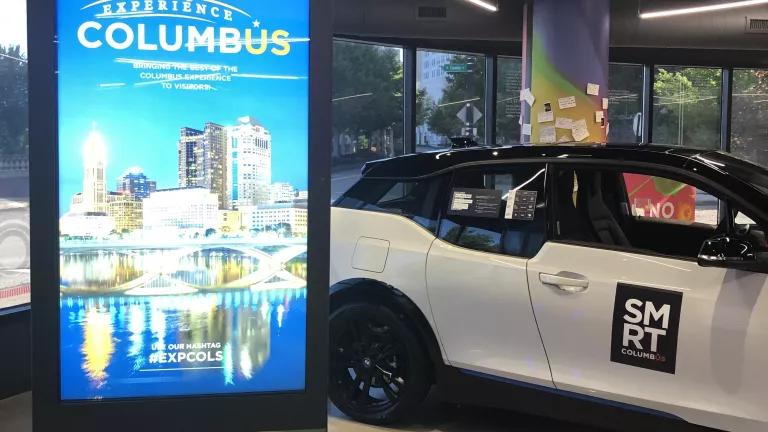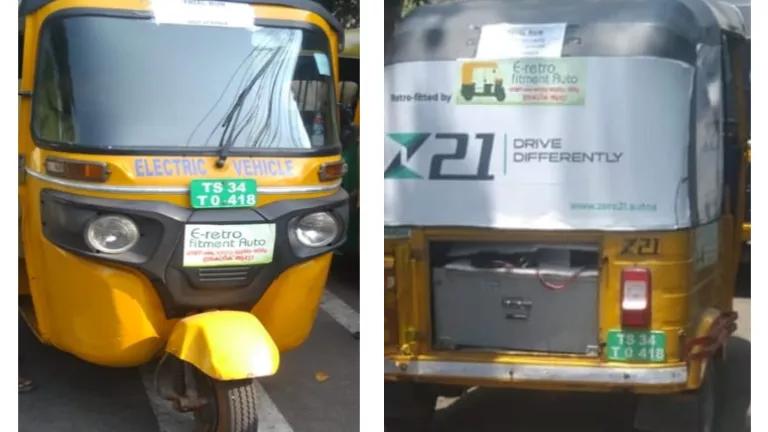Road Trip Report: How Ohioans Buy EVs (It Should Be Easier)

This is the third blog in a series about our Midwest electric vehicle adventure.
When we set out on our electric road trip, one of our goals was to spread awareness of and debunk myths about electric vehicles (EVs). It’s well known that a lack of public education about EVs is a significant barrier to their adoption, and we wanted to help make sure that potential consumers know that EVs are increasingly affordable, technologically sound, and sustainable.
But in our two-day tour of Ohio, we were reminded time and time again of another barrier to EV adoption: while many Midwesterners are fully aware of the broad benefits that EVs provide and are interested in purchasing one, they have to work very hard to actually locate an electric car to buy.
An Unexpected Challenge
You might not expect that Ohio—a state where auto companies including GM, Workhorse, and Rivian manufacture EVs and their components—is a place where people would have a hard time finding an EV to buy. But many dealerships in the state have never sold an EV and don’t have a single one on their lots. As a result, EV enthusiasts are often forced to drive far and wide to get to a dealership that sells the car of their choice.
Take Mryia Williams, a leader of the local EV community group Drive Electric Columbus. She proudly showed us her Kia Niro, a spacious electric vehicle that she was fairly certain was the first of its kind to reach Ohio. One factor in the car’s first-of-its-kind status? Williams had to drive to Maryland to pick it up.
Williams had driven an electric car—a Nissan LEAF—for two years prior to purchasing the Niro, so she had no qualms making the commitment to another EV with a bigger battery and thus a longer range. But for new or potential EV buyers, no EVs in nearby dealerships means it’s also harder to get a test drive. Ohio to Maryland or another state is a long drive to see a car you may or may not buy based on how the test spin goes.
The Solutions
The good news is that there are local groups tackling this problem. The Smart Columbus Experience Center, which we visited on the second day of our trip, represents a public-private partnership funded by grants from the U.S. Department of Transportation and Paul G. Allen Philanthropies. Visitors to the Experience Center can test drive a rotating fleet of hybrid and fully electric cars—and learn about just about anything related to the future of transportation in Ohio.
The Experience Center again demonstrates the appetite for smarter, cleaner transportation in Ohio: In its first year of operation alone, it welcomed 13,000 visitors and provided over 330 EV test drives. According to Smart Columbus, approximately 15 percent of those test drivers have already been “converted,” meaning they purchased an electric drive after their test drive.
Smart Columbus also succeeded in interfacing with a diverse set of partners, ranging from city government offices to auto manufacturers and dealerships. Jordan Davis, the director of Smart Columbus, emphasized that automakers often prioritize selling cars in states with Zero Emission Vehicle (ZEV) standards, which require that dealership stock a certain number of EVs on their lots. When automakers only manufacture enough EVs to meet ZEV state requirements, consumers in non-ZEV states like Ohio just have fewer choices.
Thus, groups like Smart Columbus are hugely useful in working with dealerships to get clean cars to places with unmet consumer demand. Smart Columbus worked with Honda, which manufactures automobile components nearby, to sell its Clarity EV throughout the state.
Getting clean cars at dealerships is an essential first step. But as our visit with recent Chevy Bolt purchasers Lori Zekel and Mark Knowles reminded us, dealer involvement in selling EVs can’t stop there.
The couple went to three Chevy dealerships before buying their Bolt.
“The first dealer knew nothing, the second had some tips on how to drive an EV but didn’t know much else, but the third dealer had driven a Volt [Chevy’s discontinued plug-in hybrid] and was a big EV enthusiast,” Knowles explained. “We bought from the third dealer.”
It was wonderful and heartening to meet with recent EV converts like Zekel and Knowles, practiced EV drivers like Williams, and public education programs like Smart Columbus. Individual actions, city-level policies, and regional programs are important in moving electric transportation forward. But moving state policy forward can take Ohio to the next level of EV adoption and transportation leadership.
We went on a Midwest electric vehicle road trip to talk about transportation policy, highlight the already booming benefits of electric vehicles to local economies, and shatter stereotypes about what it means to be an electric vehicle driver. We’re blogging about our findings, including tips for other aspiring roadtrippers and policy suggestions for further progress.
Other blogs related to our adventure include:
Driving (on) Clean Energy: Touring the Midwest in an EV
State of the States: EVs and EV Policy in the Midwest
Avoiding Range Anxiety with an EV Road Trip Checklist
Road Trip Report: Midwest Cities Move Multimodal
Midwest Electric Vehicles in 5 Maps


